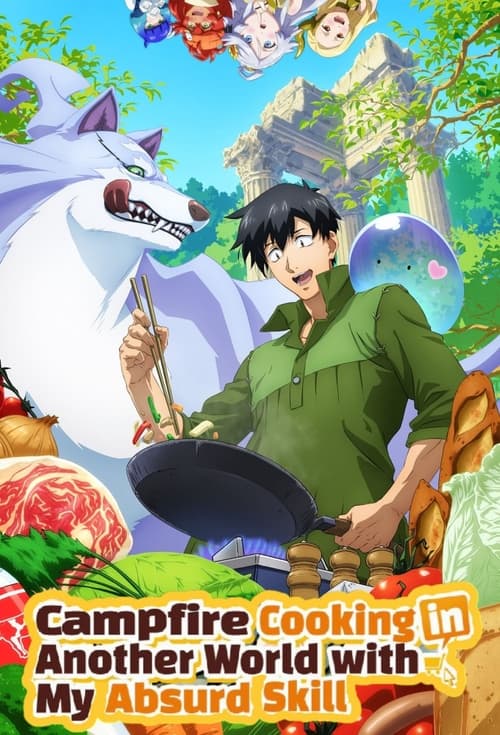
Ask Your Own Question
What is the plot?
In "Histories & Lore: Dorne," the episode begins with a sweeping view of the arid landscape of Dorne, characterized by its sun-soaked hills and vibrant flora. The narration introduces Dorne as the southernmost region of Westeros, known for its distinct culture and customs that set it apart from the rest of the Seven Kingdoms. The voiceover emphasizes the fierce independence of the Dornish people, who are proud of their heritage and often resistant to outside influence.
The narrative shifts to the Martell family, the ruling house of Dorne. The episode details the history of House Martell, highlighting their motto, "Unbowed, Unbent, Unbroken." The story recounts the legacy of Prince Oberyn Martell, known for his skill in combat and his passionate nature. The audience learns about his tragic death at the hands of the Mountain, which ignited a desire for vengeance within his family, particularly his daughters, known as the Sand Snakes.
As the episode progresses, it delves into the customs of Dorne, particularly the unique approach to marriage and inheritance. The narration explains that in Dorne, women have more rights compared to other regions, and the line of succession can pass through the female line. This cultural aspect is illustrated through the character of Princess Arianne Martell, who is poised to inherit the title of ruler of Dorne, showcasing her ambition and determination to lead her people.
The episode also touches on the political alliances and rivalries that shape Dorne's interactions with the rest of Westeros. It recounts the historical tensions between Dorne and the Iron Throne, particularly during the Targaryen reign. The narrative highlights the infamous "War of the Usurper," where Dorne remained neutral, showcasing their strategic thinking and desire to maintain autonomy.
The focus then shifts to the Sand Snakes, the daughters of Oberyn Martell, who embody the fierce spirit of Dorne. Each daughter is introduced with a brief overview of their personalities and skills. Nymeria Sand, known for her cunning and intelligence, is depicted as a master strategist. Obara Sand, the warrior, is shown wielding a spear with deadly precision. Tyene Sand, the seductress, is portrayed as both alluring and dangerous, using her charm to manipulate those around her.
The episode culminates in a discussion of the ongoing quest for vengeance against the Lannisters, particularly Cersei Lannister, for the death of Oberyn. The Sand Snakes' motivations are laid bare, revealing their desire to reclaim their family's honor and exact retribution. The episode concludes with a sense of foreboding, as the audience is left to ponder the implications of Dorne's fierce independence and the lengths to which the Martells will go to protect their legacy and seek justice.
What is the ending?
In "Histories & Lore: Dorne," the episode concludes with a detailed exploration of the culture, history, and notable figures of Dorne, a region in Westeros known for its distinct customs and fierce independence. The narrative highlights the Martell family, particularly Prince Oberyn Martell and his daughters, the Sand Snakes, who embody the spirit of Dorne. The episode emphasizes the themes of vengeance, honor, and the complexities of family loyalty, culminating in a rich tapestry of Dorne's legacy within the larger context of the Game of Thrones universe.
As the episode unfolds, it begins with a sweeping view of the arid landscape of Dorne, showcasing its sun-soaked beaches and rugged mountains. The narrator introduces Dorne as a land that stands apart from the rest of Westeros, both geographically and culturally. The people of Dorne are depicted as passionate and proud, with a strong sense of identity that is deeply rooted in their history.
The narrative then shifts to the Martell family, focusing on Prince Oberyn Martell, known for his charm and combat prowess. The episode recounts his tragic fate during a trial by combat, where he seeks vengeance for his sister Elia's murder at the hands of the Lannisters. The emotional weight of Oberyn's quest for justice is palpable, as he fights not only for personal revenge but also to honor his family's legacy. His death, a brutal and shocking moment, serves as a turning point for Dorne, igniting a desire for retribution among his daughters, the Sand Snakes.
The Sand Snakes--Obara, Nymeria, and Tyene--are introduced as fierce warriors, each embodying different aspects of their father's spirit. The episode delves into their motivations, showcasing their determination to avenge Oberyn's death and reclaim their family's honor. The tension builds as they plot their course of action against the Lannisters, driven by a mix of grief and anger.
As the narrative progresses, the episode highlights the political landscape of Dorne, illustrating the delicate balance of power and the region's desire for autonomy. The Martells' alliance with Daenerys Targaryen is hinted at, suggesting a potential shift in the power dynamics of Westeros. The episode concludes with a sense of unresolved tension, as the Sand Snakes prepare to take action, leaving viewers with a lingering anticipation of the conflict that lies ahead.
In summary, "Histories & Lore: Dorne" encapsulates the essence of Dorne's culture and the Martell family's legacy, setting the stage for future conflicts while emphasizing themes of vengeance, honor, and the complexities of familial loyalty. The episode ends with the Sand Snakes poised for action, embodying the fierce spirit of Dorne as they seek to avenge their father's death and assert their place in the ongoing struggle for power in Westeros.
Is there a post-credit scene?
In the episode "Histories & Lore: Dorne" from the "Game of Thrones" specials, there is no post-credit scene. The episode focuses on the rich history and culture of Dorne, narrated by various characters from the series. It delves into the unique customs, the significance of the Martell family, and the distinct geographical features of Dorne, such as its hot climate and arid landscapes. The storytelling emphasizes the pride and resilience of the Dornish people, their approach to honor and vengeance, and their complex relationships with the other regions of Westeros. The episode concludes without any additional scenes or content beyond the main narrative.
What are the key characteristics of the Martell family in Dorne?
The Martell family, rulers of Dorne, are known for their distinct customs and values that set them apart from the other noble houses of Westeros. They are characterized by their commitment to independence, their embrace of a more liberal approach to gender roles, and their fierce loyalty to their own. The family motto, 'Unbowed, Unbent, Unbroken,' reflects their resilience and determination. The Martells are also known for their unique approach to marriage and alliances, often marrying for love rather than political gain.
How does the culture of Dorne differ from the rest of Westeros?
Dorne's culture is heavily influenced by its warm climate and geography, leading to a more relaxed and open society compared to the rest of Westeros. The Dornish people are known for their acceptance of different customs, including a more egalitarian view of gender, where women can inherit titles and property. The region is also famous for its wine, spicy food, and vibrant festivals, which contrast sharply with the more austere traditions of the North and the Riverlands.
What role does Oberyn Martell play in the events of the series?
Oberyn Martell, known as the Red Viper, plays a crucial role in the series as a skilled fighter and a man driven by vengeance for his sister Elia's murder. His arrival in King's Landing is marked by a desire to seek justice against the Lannisters, particularly Gregor Clegane, whom he blames for Elia's death. Oberyn's charm, intelligence, and combat skills make him a formidable presence, and his participation in Tyrion Lannister's trial by combat becomes a pivotal moment in the series.
What is the significance of the Sand Snakes in Dorne?
The Sand Snakes are the illegitimate daughters of Oberyn Martell, each possessing unique skills and personalities that reflect their father's legacy. They are significant as they embody the fierce spirit of Dorne and the desire for vengeance against the Lannisters for their father's death. Each Sand Snake has her own motivations and methods, ranging from political intrigue to outright violence, showcasing the complexity of Dornish politics and the lengths to which they will go to protect their family's honor.
How does the geography of Dorne influence its political dynamics?
Dorne's geography, characterized by its mountainous terrain and arid climate, creates a natural barrier that has historically allowed it to maintain a degree of independence from the rest of Westeros. This isolation fosters a unique political dynamic where the Dornish people are less influenced by the central power of the Iron Throne. The region's strategic location also makes it a key player in trade and military alliances, as well as a refuge for those seeking to escape the conflicts of the Seven Kingdoms.
Is this family friendly?
The episode "Histories & Lore: Dorne" from the "Game of Thrones" specials contains several elements that may be considered objectionable or upsetting for children or sensitive viewers.
-
Violence and Warfare: The history of Dorne includes references to battles and conflicts, which may depict violence and the consequences of war.
-
Political Intrigue: The episode discusses themes of betrayal, power struggles, and assassination, which can be complex and unsettling for younger audiences.
-
Sexual Content: Dorne is known for its more liberal views on sexuality, and there are references to relationships and sexual dynamics that may not be suitable for all viewers.
-
Death and Loss: The history of the region includes discussions of significant deaths and the impact of loss on families and communities, which can be emotionally heavy.
-
Cultural Practices: Some cultural practices and traditions mentioned may be viewed as harsh or controversial, potentially leading to discomfort.
These elements contribute to a mature tone that may not be appropriate for all audiences, particularly children.
























